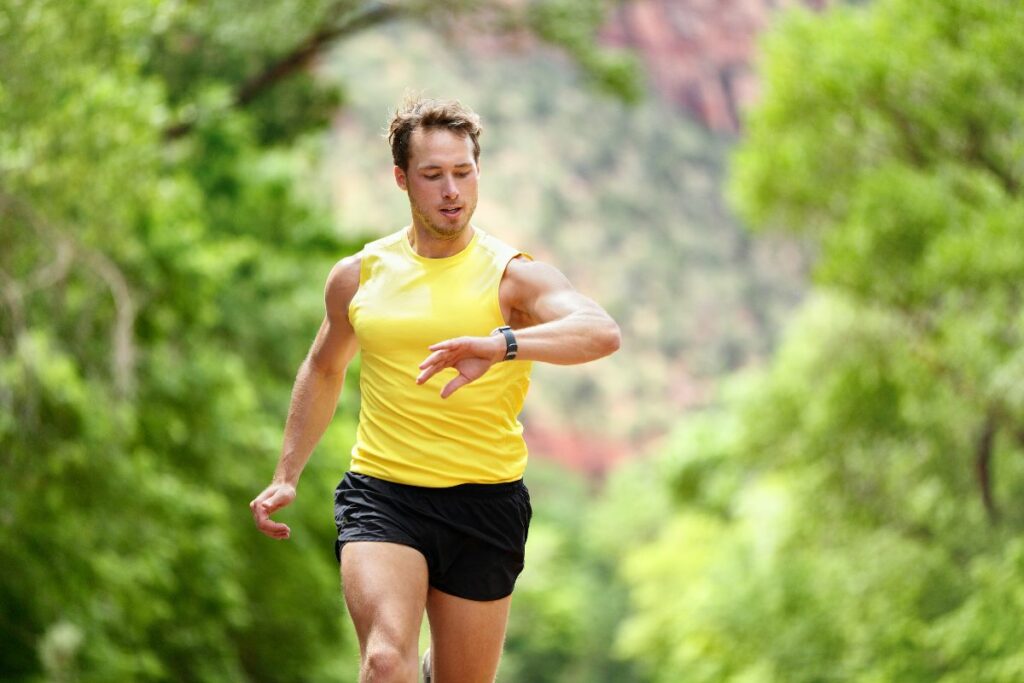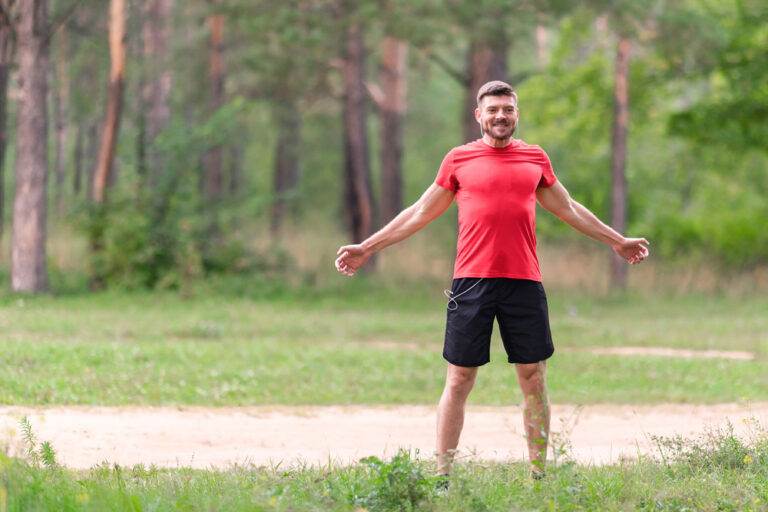What Is Cadence in Running? Is 180 SPM a Better Running Cadence?

Cadence in the running is the number of steps you take per minute. This is also known as your stride rate and is often abbreviated to SPM (stride per minute).
If you have a shorter stride length, you will be hitting the ground more often which increases your stride rate.
The more times you can push off the ground, the faster you will be running. This means that a high cadence rate indicates a fast runner.
What Is a Good Running Cadence?
Aiming for a cadence of around 180 steps per minute (SPM) while running is generally recommended. It is based on the idea that a higher cadence can help you run more efficiently and reduce the risk of injury.
Top marathoners typically run with a cadence above 180, whereas most beginners will run at around 160.
However, studies have shown there is naturally some variance in our optimal running cadences. It depends on various factors, such as height, body type, and running mechanics.
A taller runner, for example, takes longer strides and typically has a slower cadence.
Olympic runners were found to have a cadence of at least 180 SPM, so this value became the benchmark and the optimal number to shoot for.
But, with the notion of natural variance, this strict value has been gradually unpacked.
There is less benefit to running at a prescribed, one-size-fits-all cadence than previously thought (ScienceDaily: Cadence matters less than once thought).
Some runners may find that a slightly higher or lower cadence works better. It is generally a good idea to experiment with different cadences and see what works best for you.
Takeaway: cadence is highly individual, and your body knows what’s best for you.
How To Figure Out Your Current Cadence Rate
Before you attempt to change or adapt your running style, you need to be aware of your current cadence.
Learning your base cadence is easy. Simply find a smooth and flat surface for you to run on. This could be a running track, a road, or even a sidewalk.
You need a flat land so that your baseline cadence rate is measured as accurately as possible.
If the terrain is filled with bumps or inclines, then your measurements will include hesitation as you avoid holes, and muscle strains unconnected to a flat run.
With your location found, you now have two options.
1. Fitness App
The first is to use a fitness app. Any fitness app will do so as long as it can record your steps.
Now, you should start your run as normal. If you don’t normally run and this is your gateway into a new hobby, try running for 10 minutes. As soon as you find yourself faltering, stop running.
Because we are aiming to learn about your cadence rate, we want to monitor your natural stride count without being worn out.
Once you start to slow down, or when you think you’ve run enough, stop.
Now for the math. Simply divide your step count by 10. This will show you how many steps you made per minute. For example 1,500 steps / 10 minutes ran = 150 SPM
2. Manual Counting
If you don’t have a fitness app or watch that can count your steps for you, you can still figure out your cadence rate.
Instead of running for 10 minutes, only run for 30 seconds.
We have shortened the time frame to make counting easier. Now you can either count every time your feet touch the ground, or focus on one foot and count when that one touches the ground.
Go with the option that seems easier for you.
Once you have your figure, either multiply it by 2 if you were counting both feet, or multiply it by 4 if you were counting one foot.
- For example, counting one foot the math might be 37 steps over 30 seconds. 37 x 4 = 148 SPM.
- While counting both feet the math might be 75 steps over 30 seconds. 75 x 2 = 150 SPM.
- By multiplying, you will create your steps per minute even though you have only run for 30 seconds.
- Because of the reduced running time, you will need to complete these exercises at least 5 times. This way you can ensure you have the correct number and rule out any exceptions.
Manual counting is more likely to create errors due to the short time frame of running and the additional concentration needed to count and run.
You are less likely to run naturally in this method, which is why we suggest the fitness app method where possible.
Is Cadence Important for Running?
Cadence is an important aspect of running that can affect performance and efficiency. It makes up the speed with another factor, stride length.
Advanced runners usually have a higher cadence than beginners.
A higher cadence can reduce the impact on joints and muscles, improve running form, and reduce the risk of injury.
The ideal cadence can vary based on body type, running style, and terrain. Generally, it’s a good idea to experiment with cadence and find what works for you.
How To Increase Your Cadence Rate
1. Set a Goal for Your New Cadence Rate
To increase your cadence rate, you need to have a goal. A simple goal is increasing your current figure by 5 percent. Each time you achieve the increase, try for another 5 percent.
To figure out the number after the percentage increase, follow this equation:
- 0.05 x Current SMP = 5% Increase Figure
- 5% Increase Figure + Current SMP = New SMP Goal
Using our example above our new SMP goal would be:
- 0.05 x 150 SMP = 7.5 Increase Figure
- 7.5 + 150 = 157.5 SMP Goal
Of course, you cannot create a half step while running, so we can either give ourselves more wiggle room by lowering the figure to 157 SMP or push further in our goal to 158 SMP.
If you find yourself in the same situation, choose the most appealing option for you.
Now we know what our new aim is, we can start training. It can take around 2 months to increase your cadence, so don’t expect a massive change overnight.
Because cadence is all about speed, there are two options you can choose. Run your course faster, to reach a further distance in the same amount of time.

2. Going Faster
Your cadence run is your baseline speed, so you should have more room for a faster time overall.
However, to increase your cadence your overall speed needs to increase, so your fastest time becomes your new baseline.
To do this, put two timers on your fitness app. One should go off every 4 minutes and the other every 3.
You should run for 3 minutes at your base cadence or normal speed, and on the 4th minute run faster. When that minute is up, go back to your normal cadence, and repeat the cycle.
This will help you increase your speed through short sharp sprints.
3. Running Further
If you don’t have an app, you can instead run based on distance. The same rules apply, but you need to run at a faster pace for longer. This time, you should run faster every third mile.
See also: What Does Pace Mean In Running?
Eventually, these new speeds will feel normal to you. After 2 months of training, you should test your cadence rate again to figure out your new speed.
The Bottom Line
So what is running cadence? Cadence is another word for stride per minute. It tells you what your baseline speed is without sprinting.
The optimal cadence is considered to be 180 SPM. However, your weight, height, and abilities will affect your optimal figure.
Learning your cadence is simple, but increasing it will take time.






